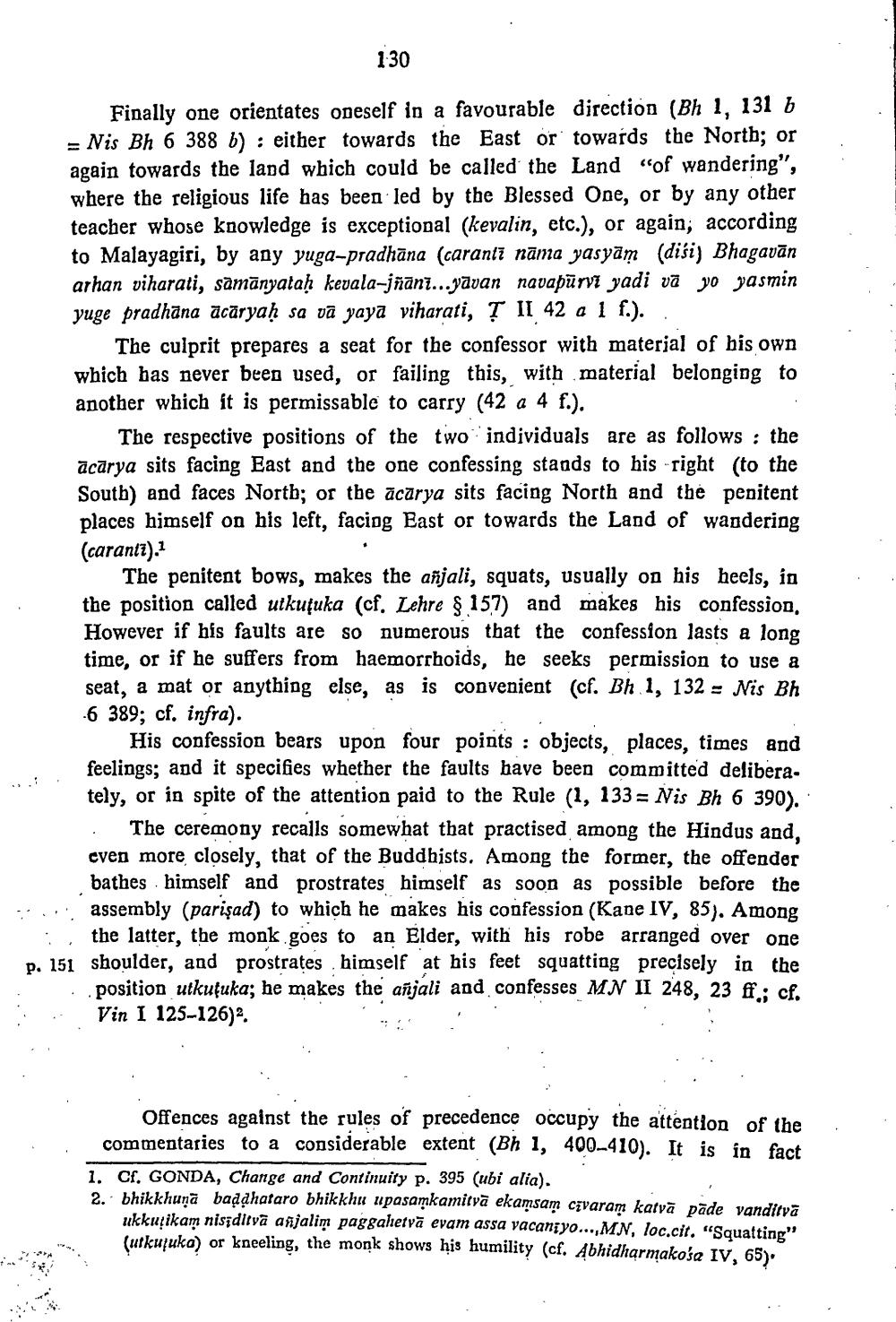________________
1:30
Finally one orientates oneself in a favourable direction (Bh 1, 131 b = Nis Bh 6 388 b): either towards the East or towards the North; or again towards the land which could be called the Land "of wandering", where the religious life has been led by the Blessed One, or by any other teacher whose knowledge is exceptional (kevalin, etc.), or again, according to Malayagiri, by any yuga-pradhana (caranti nama yasyam (disi) Bhagavan arhan viharati, samanyataḥ kevala-jñāni...yavan navapūrvi yadi va yo yasmin yuge pradhana ācāryaḥ sa va yaya viharati, T II 42 a 1 f.).
The culprit prepares a seat for the confessor with material of his own which has never been used, or failing this, with material belonging to another which it is permissable to carry (42 a 4 f.).
The respective positions of the two individuals are as follows: the ācārya sits facing East and the one confessing stands to his right (to the South) and faces North; or the acarya sits facing North and the penitent places himself on his left, facing East or towards the Land of wandering (caranti).1
The penitent bows, makes the añjali, squats, usually on his heels, in the position called utkutuka (cf. Lehre § 157) and makes his confession, However if his faults are so numerous that the confession lasts a long time, or if he suffers from haemorrhoids, he seeks permission to use a seat, a mat or anything else, as is convenient (cf. Bh 1, 132 Nis Bh 6 389; cf. infra).
His confession bears upon four points: objects, places, times and feelings; and it specifies whether the faults have been committed deliberately, or in spite of the attention paid to the Rule (1, 133 = Nis Bh 6 390).
The ceremony recalls somewhat that practised among the Hindus and, even more closely, that of the Buddhists. Among the former, the offender bathes himself and prostrates himself as soon as possible before the assembly (parişad) to which he makes his confession (Kane IV, 85). Among the latter, the monk goes to an Elder, with his robe arranged over one p. 151 shoulder, and prostrates himself at his feet squatting precisely in the position utkuțuka; he makes the añjali and confesses MN II 248, 23 ff.; cf. Vin I 125-126)2.
Offences against the rules of precedence occupy the attention of the commentaries to a considerable extent (Bh 1, 400-410). It is in fact 1. Cf. GONDA, Change and Continuity p. 395 (ubi alia).
2. bhikkhuna badḍhataro bhikkhu upasamkamitvā ekamsam civaram katva pāde vanditvä ukkuļikam nisīditva anjalim paggahetvā evam assa vacantyo...,MN, loc.cit. "Squatting" (utkutuka) or kneeling, the monk shows his humility (cf. Abhidharmakosa IV, 65).




